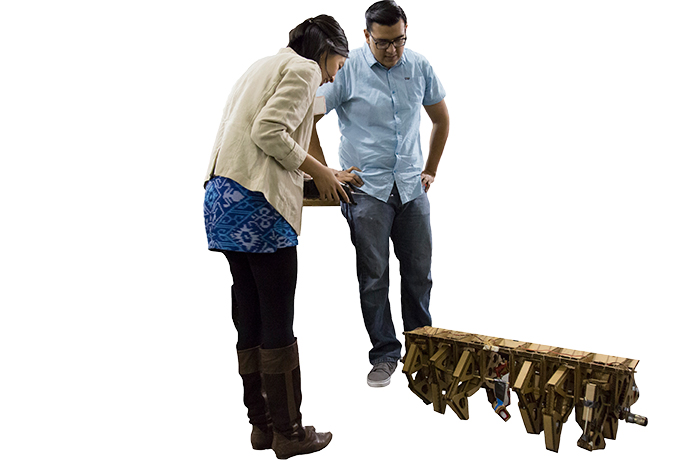The silver tsunami is coming!
No, this isn’t a line from a Hollywood movie. It’s real life and it’s happening across the country. As baby boomers retire and leave the workforce, younger generations will need to fill the vacant positions left in their wake. But will there be enough qualified workers?
Fortunately for California, it has the largest workforce training provider in the nation. California Community Colleges (CCC) educates more than 100,000 students each year. That is good news because by 2025, 30 percent of all job openings in California will require some form of post-secondary education.
The California Community College Chancellor’s Office started the CCC Maker Initiative in 2016 with a $17-million statewide grant and the intention of creating a “college maker culture” to prepare students for careers in entrepreneurship, STEM and STEAM fields. The three-year initiative began in 2016 as part of the CCC Doing What Matters for Jobs and the Economy framework.
“California has such an image of being high-tech and creative, but there’s also this sort of willingness to experiment in some ways,” says Deborah Bird, technical assistance provider of the CCC maker initiative. “I think this is very much in the spirit of California’s sort of creative identity and its ability to blend the arts and sciences together. In that respect, I think it’s very promising for California.”
“California has such an image of being high-tech and creative, but there’s also this sort of willingness to experiment in some ways. ”
The initiative aims to address a decline in entrepreneurship among young people and create a robust workforce pipeline that can keep up with the needs of employers in regions throughout the state. This program is expected to help close the state’s middle-skills gap and prepare students for careers in STEM, STEAM and advanced manufacturing, while fueling job creation and improving the health of local and regional economies.
The makerspaces can be found at 24 colleges across the state and each has unique characteristics. The makerspaces provide students with the opportunity to use technology like 3D printers, laser etchers and CAD software they might not otherwise have access to. Half of the colleges currently have makerspaces up and running while the remaining half are still being created.
“Each community college has designed a plan that is unique to its campus and community,” says Carol Pepper-Kittredge, CCC Maker Statewide Project Director. “It’s not a cookie-cutter approach. It’s very much looking at what are the needs of the students and faculty and employers in that region, and asking, ‘How can a makerspace add value, not only internally to curriculum, but also produce students that are more aligned with the high-wage, high-skilled jobs available in their communities?’”
Bird says the initiative is not only creating opportunities for students to learn valuable skills for the future, but also for employers to have a ready pipeline of skilled workers. The initiative also provides funds for 800 internship opportunities in a variety of fields including advanced manufacturing, product design, aerospace, drone technology, robotics, fashion and design.
California Community Colleges is the largest workforce training provider in the country.
A few examples of the unique approaches colleges and local community partners are taking to create their makerspaces include a mobile makerspace trailer at Allan Hancock College in Santa Maria; the Sierra College Truckee Roundhouse located in a hangar at the Truckee-Tahoe Airport in Rocklin; and The MakerSphere at City College of San Francisco — three makerspaces which will allow collaboration across the campuses via networking technology by spring 2018.
“These 24 colleges have demonstrated their commitment to establishing makerspaces, placing students in internships, developing curriculum that prepares students with 21st century skills and participating in a statewide network of college makerspaces that are tailored to meet the needs of regional economies,” said Van Ton-Quinlivan, California Community Colleges Vice Chancellor of Workforce & Economic Development.

